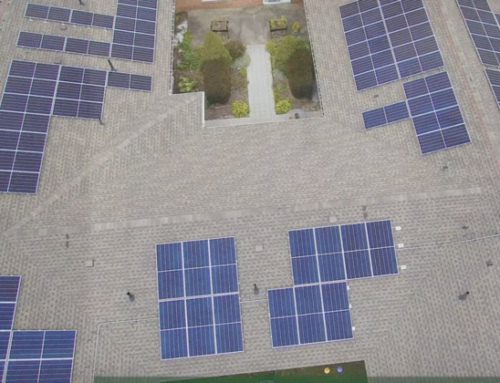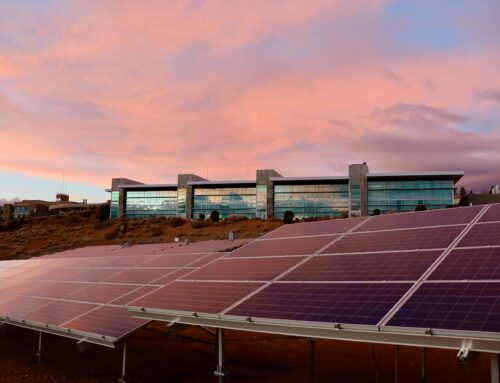Trump is unlikely to significantly obstruct the clean energy transition.
January 5, 2025
Despite strong public support for protecting the environment, climate change was not a decisive issue in the 2024 presidential election. Trump is signaling his distain for international greenhouse gas (GHG) targets and support for fossil fuel interests, especially oil/gas production. It remains to be seen whether the clean energy transition will continue recent progress in reducing domestic GHG emissions. Climate progress. As discussed in this article, market trends coupled with the landmark energy-related Biden legislation will continue the transition away from legacy fossil fuel-centric energy infrastructure and toward more cost-effective and reliable clean energy technologies.
The federal government has considerable energy-related authority. With major new energy legislation in the near-term unlikely, the federal government can still weaken pollution regulations on fossil fuel-fired facilities, reduce renewable incentives, enact import tariffs, open fossil fuel production areas, impact multi-state energy regulations, and support export permits. These steps take time and are subject to litigation. The effect of these negative steps are subject to economic and market headwinds to continue the clean energy transition. A single administration is unlikely to reverse the clean energy transition propelling domestic climate change progress. New energy technologies and energy markets, coupled with state climate leadership fostering low carbon energy usage, will probably offset new federal government negative impacts on climate progress.
Energy usage is responsible for about 74% of all domestic man-made climate damaging GHGs. These GHGs result from burning fossil fuels for generating electricity, home and industrial heating, and transportation. State/city authorities and consumer choice have a large impact on reducing GHGs by substituting fossil fuels with renewable energy resources, enacting energy efficiency measures, and supporting other low carbon investments. During the first Trump administration, many states led the progress in combatting climate change. Today, new energy technologies and economic trends offer even more opportunities for states and individuals to continue climate progress while reducing electricity costs and improving electric reliability.
State decision-making will shape the investment needed to upgrade legacy fossil fuel-centric energy infrastructure that resulted from outdated policies and technology. Decades ago, states granted local utilities monopolies and generous returns to quickly build large power plants (from oil/coal, and then nuclear) and simple radial one-way wires to deliver electricity. The average age of these power plants is now 45 years old. The associated electric grid is vulnerable, and it currently has limited digital capability. Over time environmental and safety issues have driven power plant operation and maintenance costs so high that these old plants are being replaced with new less expensive and reliable energy technologies. The grid has shown itself to be unreliable with extreme weather and lacking in current digital flexibility to support the integration of private energy systems and new digital load management technologies. States are increasingly using their significant authority to shift old energy utility investment patterns toward clean energy technologies, e.g., providing utility rates for investments involving overall cost containment and support for state policies. As of 2024, 25 states and Washington DC required utilities to expand renewable resources usage. State clean energy targets. In addition, fourteen domestic cities (including Boston, New York City, Los Angles, Houston, Chicago, Phoenix, Philadelphia) are C40 members with significant climate programs.
New utility and consumer technologies will continue to drive the clean energy trend. The Levelized Cost of Electricity (LCOE) for generating electricity from new renewable wind and solar facilities is significantly below the cost for continuing to run existing coal-fired plants leading to significant plant retirements. Falling electricity storage infrastructure costs (important for supporting integrated renewable projects) are becoming comparable to building more natural gas power plants. Renewables v. natural gas projects. Because of the relative economics, in 2023 new utility-scale solar and wind projects accounted for 77% of utility-scale facilities in development.
Complementing the need for more electric generation facilities to meet increasing electric demand, new computer-based technologies are being deployed to optimize the electric carrying capacity on the electric grid. These technologies give states more options to scrutinize whether the public would benefit from making grid investments rather than allowing capital costs for building new utility generation plants. These computer-based technologies also enable customer/utility load management techniques, as well as integrating privately-owned renewable generation that reduce the need for utility investments.
Individuals and businesses can install technologies to lower their energy costs and increase reliability. These modern technologies vary from on-site electric generation/storage equipment, software-based systems to manage energy usage and participation in virtual power plant programs, and metering systems for managing variable energy pricing. The LCOE of installed residential solar is already lower than the average domestic residential $0.12 cents per kWh electric rate, without incentives. If you integrate storage batteries, the current price will double the system cost. However, the battery storage declining cost trend is following the solar price decline pattern. In addition, battery storage provides more benefits than smoothing solar and wind generation intermittency, such as pricing arbitrage and backup power. While electric costs are lower for larger business and institutional sources, the need for reliability and economies-of-scale provide price advantages for new energy technologies. According to The US Energy Information Administration the national electric rate increased 4.5% compared with 2023; thus, the price differential between electricity produced from traditional electric infrastructure and new renewable/digital sources will grow.
Cost-competitive clean energy resources have proven to be bipartisan as states grapple with rising electricity demand from data centers, electric vehicles/appliances, manufacturing growth, as well as the need for reliability during extreme weather. For example, even large oil/gas states like Oklahoma and Texas are significantly expanding their clean energy transition. Oklahoma. Texas is the leading state in deploying wind, utility-scale solar, and grid-connected batteries. The recent election did not significantly change the state political landscape balance. State elections. The growing demand for electricity and the billions flowing from the Inflation Reduction Act and the Bipartisan Infrastructure Act to red states is likely to strengthen political support for cost-effective clean energy technologies.
While past state climate activity is not a prologue to the future, there has been significant state post-election activity suggesting a reassumed climate leadership role. On Nov. 21st Massachusetts passed an aggressive climate bill and thereafter New York passed a bill to recoup extreme weather damage expenses from fossil fuel GHG emissions. In addition, on December 19th, a bipartisan coalition of 21 governors representing 60% of the US economy and 55% of the U.S. population announced support for the new domestic 2035 climate target. The improving economic trends from clean energy technologies with political support from the growing new clean energy industrial base is likely to thwart the impact of future federal action to reduce clean energy incentives.
Given the growing demand for electricity there may be a slowdown in coal-fired plant retirements. However, the high costs associated with operating and maintaining these plants makes continued usage unsustainable. The DOE and FERC have tools to require coal or gas plants to remain operational for grid reliability. The continued operation of legacy coal-fueled (and nuclear) could impair new renewable project financing. However, such DOE/FERC actions require administrative steps to implement these authorities, and this action will probably result in litigation delays. These potential delays would occur in the context of businesses pushing to quickly install new power-hungry data centers.
Long-term business strategies, market pricing, recent technologies, climate change-related weather damage, and state climate leadership will continue climate progress. A single administration is unlikely to significantly change this clean energy trajectory. While the new administration may seek changes that could moderate environmental and climate progress, state and local authorities will continue having the last word on long-term state electric investments that affect the environment and energy goals.
Search
RECENT PRESS RELEASES
Related Post



